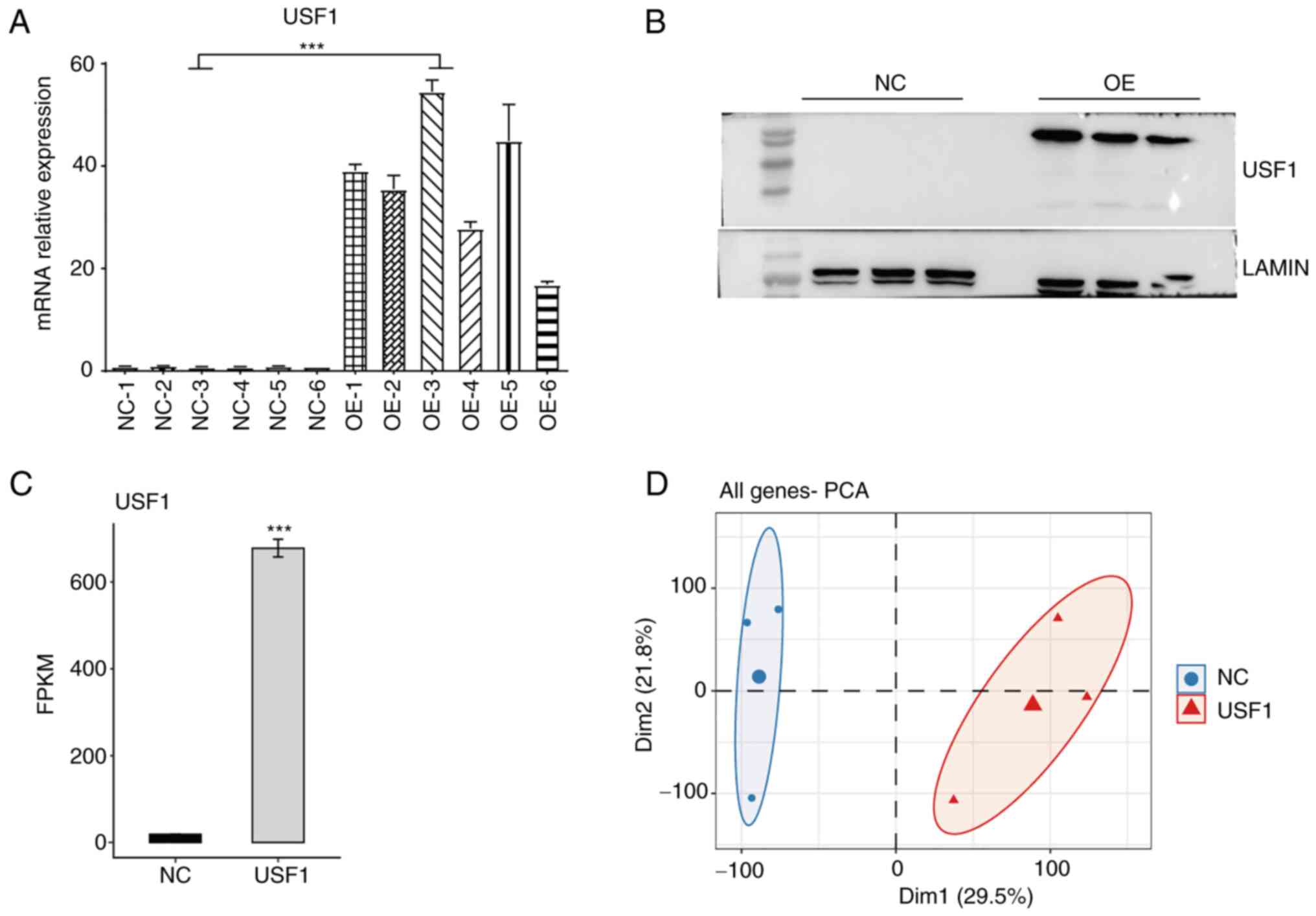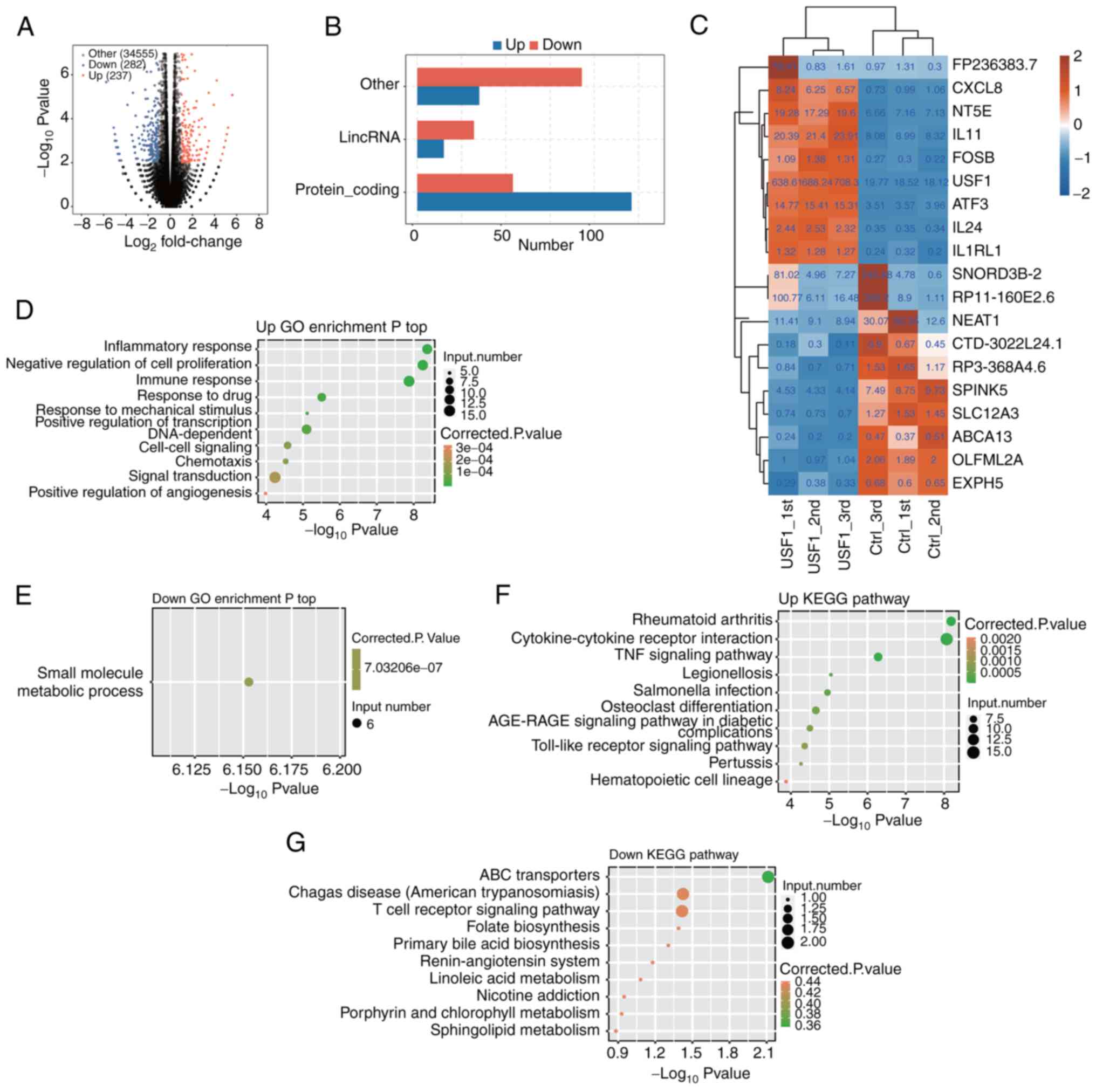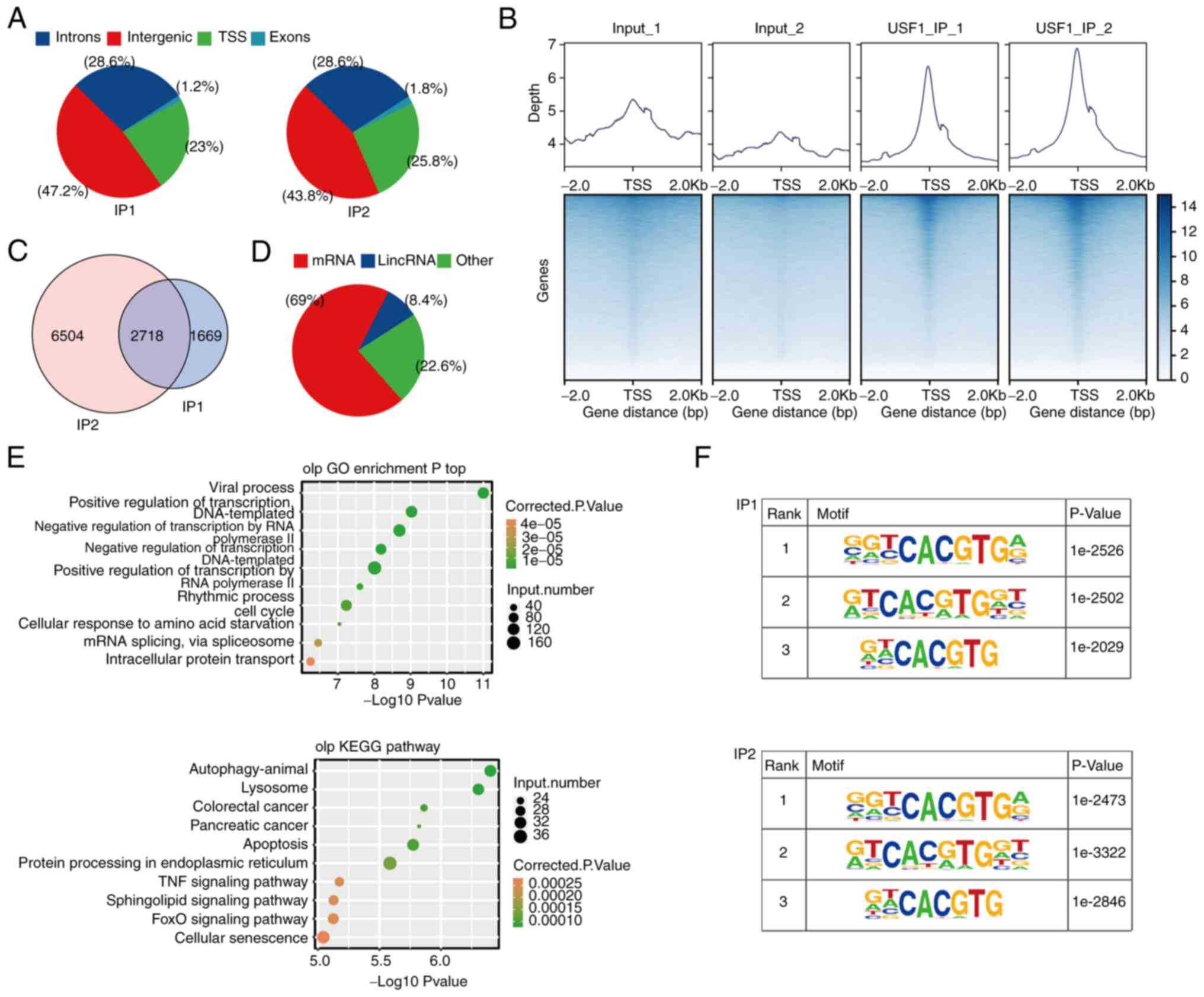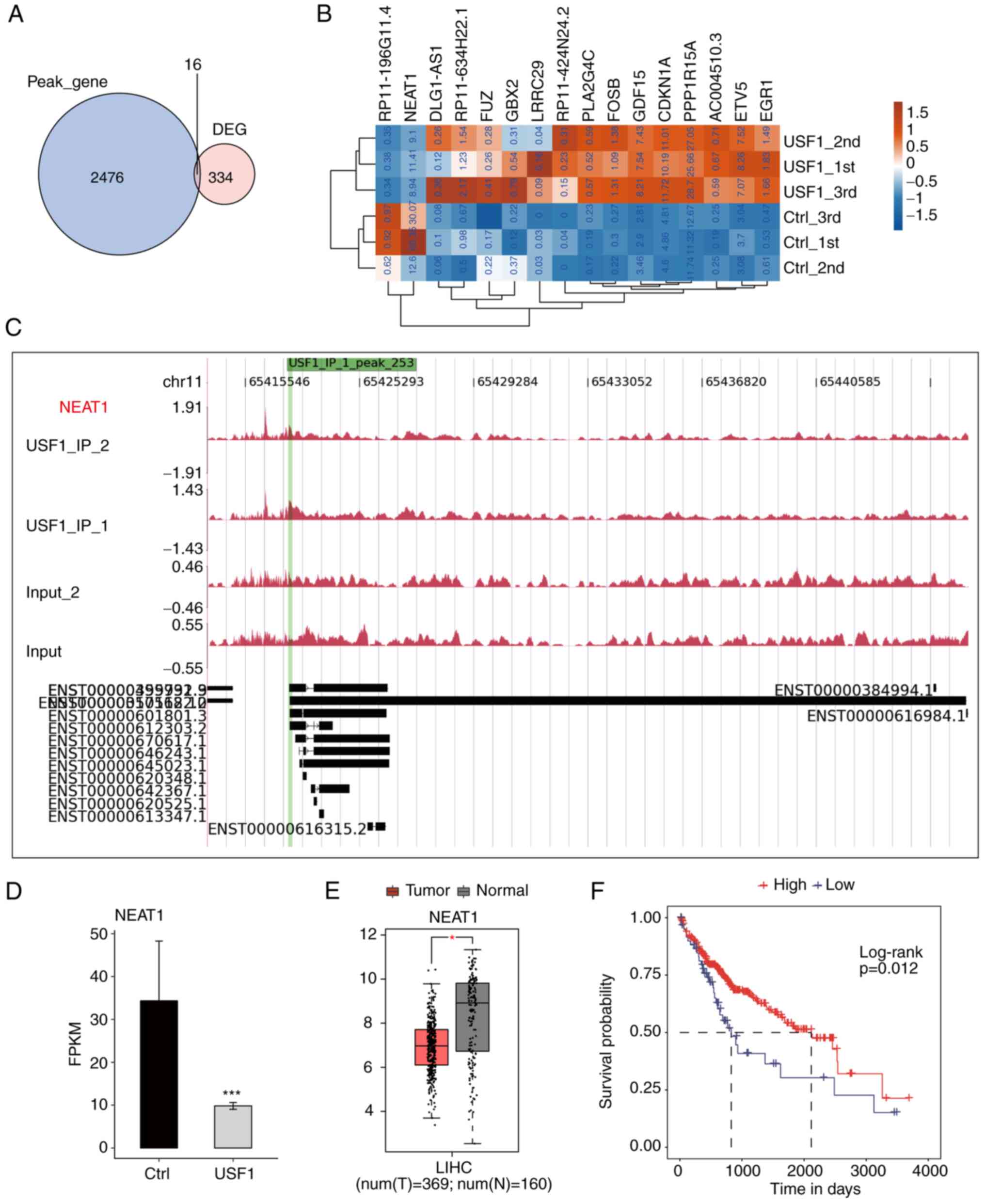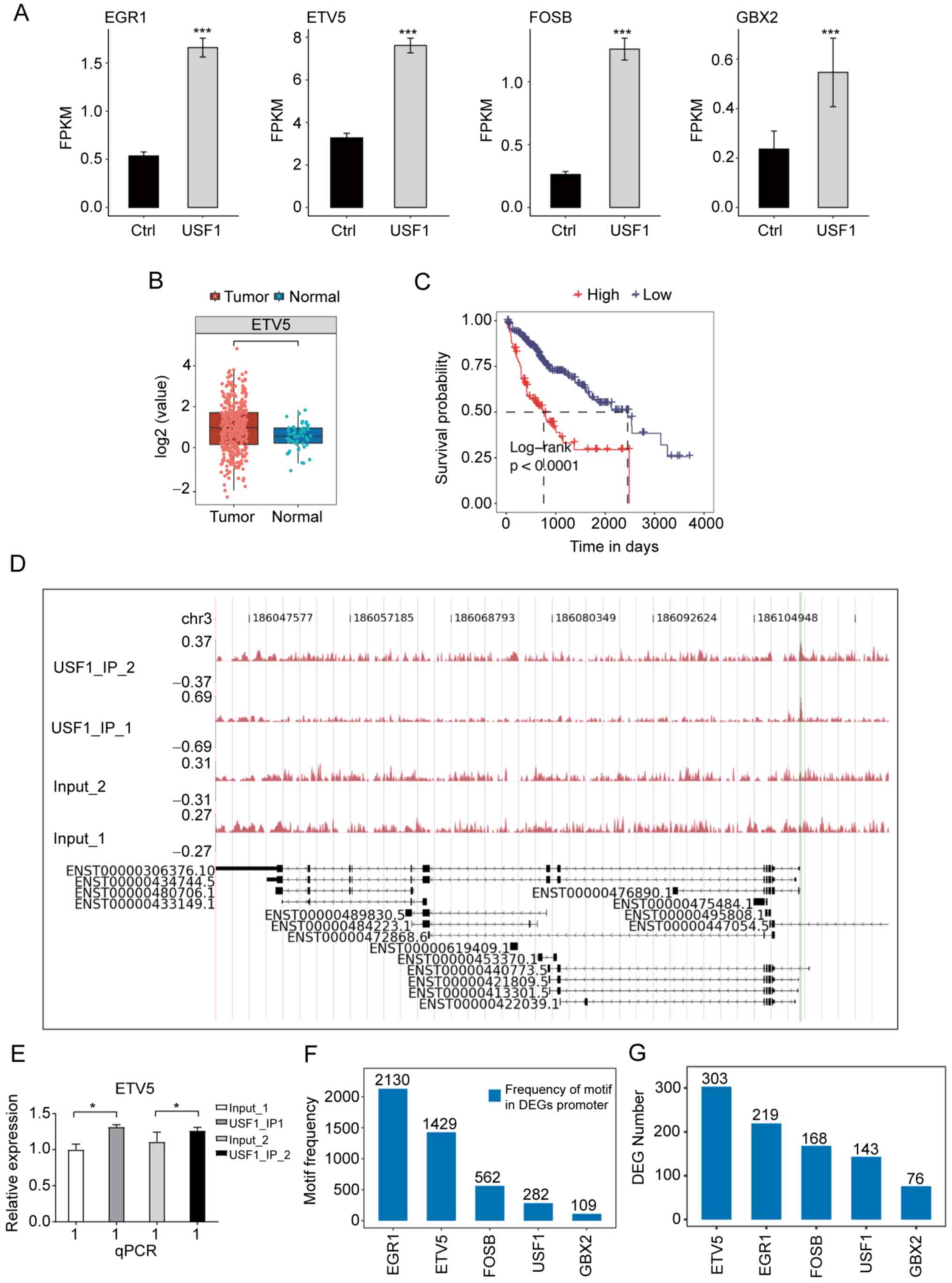|
1
|
Sung H, Ferlay J, Siegel RL, Laversanne M,
Soerjomataram I, Jemal A and Bray F: Global cancer statistics 2020:
GLOBOCAN estimates of incidence and mortality worldwide for 36
cancers in 185 countries. CA Cancer J Clin. 71:209–249. 2021.
View Article : Google Scholar : PubMed/NCBI
|
|
2
|
Cao W, Chen HD, Yu YW, Li N and Chen WQ:
Changing profiles of cancer burden worldwide and in China: A
secondary analysis of the global cancer statistics 2020. Chin Med J
(Engl). 134:783–791. 2021. View Article : Google Scholar : PubMed/NCBI
|
|
3
|
Anwanwan D, Singh SK, Singh S, Saikam V
and Singh R: Challenges in liver cancer and possible treatment
approaches. Biochim Biophys Acta Rev Cancer. 1873:1883142020.
View Article : Google Scholar : PubMed/NCBI
|
|
4
|
Nakagawa H, Fujita M and Fujimoto A:
Genome sequencing analysis of liver cancer for precision medicine.
Semin Cancer Biol. 55:120–127. 2019. View Article : Google Scholar : PubMed/NCBI
|
|
5
|
Rada-Iglesias A, Ameur A, Kapranov P,
Enroth S, Komorowski J, Gingeras TR and Wadelius C: Whole-genome
maps of USF1 and USF2 binding and histone H3 acetylation reveal new
aspects of promoter structure and candidate genes for common human
disorders. Genome Res. 18:380–392. 2008. View Article : Google Scholar : PubMed/NCBI
|
|
6
|
Lu TC, Wang Z, Feng X, Chuang P, Fang W,
Chen Y, Neves S, Maayan A, Xiong H, Liu Y, et al: Retinoic acid
utilizes CREB and USF1 in a transcriptional feed-forward loop in
order to stimulate MKP1 expression in human immunodeficiency
virus-infected podocytes. Mol Cell Biol. 28:5785–5794. 2008.
View Article : Google Scholar : PubMed/NCBI
|
|
7
|
Zeng Y, Li H, Zhang X, Shang J and Kang Y:
Basal transcription of APOBEC3G is regulated by USF1 gene in
hepatocyte. Biochem Biophys Res Commun. 470:54–60. 2016. View Article : Google Scholar : PubMed/NCBI
|
|
8
|
Kim KC, Yun J, Son DJ, Kim JY, Jung JK,
Choi JS, Kim YR, Song JK, Kim SY, Kang SK, et al: Suppression of
metastasis through inhibition of chitinase 3-like 1 expression by
miR-125a-3p-mediated up-regulation of USF1. Theranostics.
8:4409–4428. 2018. View Article : Google Scholar : PubMed/NCBI
|
|
9
|
Chang JTC, Yang HT, Wang TCV and Cheng AJ:
Upstream stimulatory factor (USF) as a transcriptional suppressor
of human telomerase reverse transcriptase (hTERT) in oral cancer
cells. Mol Carcinog. 44:183–192. 2005. View
Article : Google Scholar : PubMed/NCBI
|
|
10
|
Costa L, Corre S, Michel V, Le Luel K,
Fernandes J, Ziveri J, Jouvion G, Danckaert A, Mouchet N, Da Silva
Barreira D, et al: USF1 defect drives p53 degradation during
Helicobacter pylori infection and accelerates gastric
carcinogenesis. Gut. 69:1582–1591. 2020. View Article : Google Scholar : PubMed/NCBI
|
|
11
|
Song X, Zhu M, Li H, Liu B, Yan Z, Wang W,
Li H, Sun J and Li S: USF1 promotes the development of knee
osteoarthritis by activating the NF-κB signaling pathway. Exp Ther
Med. 16:3518–3524. 2018.PubMed/NCBI
|
|
12
|
Zhang L, Handel MV, Schartner JM, Hagar A,
Allen G, Curet M and Badie B: Regulation of IL-10 expression by
upstream stimulating factor (USF-1) in glioma-associated microglia.
J Neuroimmunol. 184:188–197. 2007. View Article : Google Scholar : PubMed/NCBI
|
|
13
|
Wei G, Zhang T, Li Z, Yu N, Xue X, Zhou D,
Chen Y, Zhang L, Yao X and Ji G: USF1-mediated upregulation of
lncRNA GAS6-AS2 facilitates osteosarcoma progression through
miR-934/BCAT1 axis. Aging (Albany NY). 12:6172–6190. 2020.
View Article : Google Scholar : PubMed/NCBI
|
|
14
|
Sun Q, Li J, Li F, Li H, Bei S, Zhang X
and Feng L: LncRNA LOXL1-AS1 facilitates the tumorigenesis and
stemness of gastric carcinoma via regulation of miR-708-5p/USF1
pathway. Cell Prolif. 52:e126872019. View Article : Google Scholar : PubMed/NCBI
|
|
15
|
Zhao X and Wang T, Liu B, Wu Z, Yu S and
Wang T: Significant association between upstream transcription
factor 1 rs2516839 polymorphism and hepatocellular carcinoma risk:
A case-control study. Tumour Biol. 36:2551–2558. 2015. View Article : Google Scholar : PubMed/NCBI
|
|
16
|
Liu S, Qiu J, He W, Geng C, He G, Liu C,
Cai D, Liu X, Tian B and Pan H: TUG1 long non-coding RNA enlists
the USF1 transcription factor to overexpress ROMO1 leading to
hepatocellular carcinoma growth and metastasis. MedComm (2020).
1:386–399. 2020.PubMed/NCBI
|
|
17
|
Peng JY, Cai DK, Zeng RL, Zhang CY, Li GC,
Chen SF, Yuan XQ and Peng L: Upregulation of superenhancer-driven
LncRNA FASRL by USF1 promotes de novo fatty acid biosynthesis to
exacerbate hepatocellular carcinoma. Adv Sci (Weinh).
10:e22047112022.(Epub ahead of print). View Article : Google Scholar : PubMed/NCBI
|
|
18
|
Chen B, Chen XP, Wu MS, Cui W and Zhong M:
Expressions of heparanase and upstream stimulatory factor in
hepatocellular carcinoma. Eur J Med Res. 19:452014. View Article : Google Scholar : PubMed/NCBI
|
|
19
|
Kim D, Langmead B and Salzberg SL: HISAT:
A fast spliced aligner with low memory requirements. Nat Methods.
12:357–360. 2015. View Article : Google Scholar : PubMed/NCBI
|
|
20
|
Trapnell C, Williams BA, Pertea G,
Mortazavi A, Kwan G, van Baren MJ, Salzberg SL, Wold BJ and Pachter
L: Transcript assembly and quantification by RNA-Seq reveals
unannotated transcripts and isoform switching during cell
differentiation. Nat Biotechnol. 28:511–515. 2010. View Article : Google Scholar : PubMed/NCBI
|
|
21
|
Robinson MD, McCarthy DJ and Smyth GK:
edgeR: A Bioconductor package for differential expression analysis
of digital gene expression data. Bioinformatics. 26:139–140. 2010.
View Article : Google Scholar : PubMed/NCBI
|
|
22
|
Langmead B and Salzberg SL: Fast
gapped-read alignment with bowtie 2. Nat Methods. 9:357–359. 2012.
View Article : Google Scholar : PubMed/NCBI
|
|
23
|
Zhang Y, Liu T, Meyer CA, Eeckhoute J,
Johnson DS, Bernstein BE, Nusbaum C, Myers RM, Brown M, Li W and
Liu XS: Model-based analysis of ChIP-Seq (MACS). Genome Biol.
9:R1372008. View Article : Google Scholar : PubMed/NCBI
|
|
24
|
Ramírez F, Ryan DP, Grüning B, Bhardwaj V,
Kilpert F, Richter AS, Heyne S, Dündar F and Manke T: deepTools2: A
next generation web server for deep-sequencing data analysis.
Nucleic Acids Res. 44((W1)): W160–W165. 2016. View Article : Google Scholar : PubMed/NCBI
|
|
25
|
Heinz S, Benner C, Spann N, Bertolino E,
Lin YC, Laslo P, Cheng JX, Murre C, Singh H and Glass CK: Simple
combinations of lineage-determining transcription factors prime
cis-regulatory elements required for macrophage and B cell
identities. Mol Cell. 38:576–589. 2010. View Article : Google Scholar : PubMed/NCBI
|
|
26
|
Livak KJ and Schmittgen TD: Analysis of
relative gene expression data using real-time quantitative PCR and
the 2(−Delta Delta C(T)) method. Methods. 25:402–408. 2001.
View Article : Google Scholar : PubMed/NCBI
|
|
27
|
Tang Z, Kang B, Li C, Chen T and Zhang Z:
GEPIA2: An enhanced web server for large-scale expression profiling
and interactive analysis. Nucleic Acids Res. 47((W1)): W556–W560.
2019. View Article : Google Scholar : PubMed/NCBI
|
|
28
|
Nagy Á, Munkácsy G and Győrffy B:
Pancancer survival analysis of cancer hallmark genes. Sci Rep.
11:60472021. View Article : Google Scholar : PubMed/NCBI
|
|
29
|
Corre S and Galibert MD: Upstream
stimulating factors: Highly versatile stress-responsive
transcription factors. Pigment Cell Res. 18:337–348. 2005.
View Article : Google Scholar : PubMed/NCBI
|
|
30
|
Dong P, Xiong Y, Yue J, Hanley SJB,
Kobayashi N, Todo Y and Watari H: Long non-coding RNA NEAT1: A
novel target for diagnosis and therapy in human tumors. Front
Genet. 9:4712018. View Article : Google Scholar : PubMed/NCBI
|
|
31
|
Tiruppathi C, Soni D, Wang DM, Xue J,
Singh V, Thippegowda PB, Cheppudira BP, Mishra RK, Debroy A, Qian
Z, et al: The transcription factor DREAM represses the
deubiquitinase A20 and mediates inflammation. Nat Immunol.
15:239–247. 2014. View Article : Google Scholar : PubMed/NCBI
|
|
32
|
Cho MJ, Lee DG, Lee JW, Hwang B, Yoon SJ,
Lee SJ, Park YJ, Park SH, Lee HG, Kim YH, et al: Endothelial PTP4A1
mitigates vascular inflammation via USF1/A20 axis-mediated NF-κB
inactivation. Cardiovasc Res. 119:1265–1278. 2023. View Article : Google Scholar : PubMed/NCBI
|
|
33
|
Yu LX, Ling Y and Wang HY: Role of
nonresolving inflammation in hepatocellular carcinoma development
and progression. NPJ Precis Oncol. 2:62018. View Article : Google Scholar : PubMed/NCBI
|
|
34
|
Liu JKH, Irvine AF, Jones RL and Samson A:
Immunotherapies for hepatocellular carcinoma. Cancer Med.
11:571–591. 2022. View Article : Google Scholar : PubMed/NCBI
|
|
35
|
Dahlquist KJV, Voth LC, Fee AJ and
Stoeckman AK: An autocrine role for CXCL1 in progression of
hepatocellular carcinoma. Anticancer Res. 40:6075–6081. 2020.
View Article : Google Scholar : PubMed/NCBI
|
|
36
|
Xu J, Lin H, Wu G, Zhu M and Li M:
IL-6/STAT3 is a promising therapeutic target for hepatocellular
carcinoma. Front Oncol. 11:7609712021. View Article : Google Scholar : PubMed/NCBI
|
|
37
|
Zhang L, Zhang L, Li H, Ge C, Zhao F, Tian
H, Chen T, Jiang G, Xie H, Cui Y, et al: CXCL3 contributes to
CD133(+) CSCs maintenance and forms a positive feedback regulation
loop with CD133 in HCC via Erk1/2 phosphorylation. Sci Rep.
6:274262016. View Article : Google Scholar : PubMed/NCBI
|
|
38
|
Ringelhan M, McKeating JA and Protzer U:
Viral hepatitis and liver cancer. Philos Trans R Soc Lond B Biol
Sci. 372:201602742017. View Article : Google Scholar : PubMed/NCBI
|
|
39
|
Deng C, Li Y, Liang S, Cui K, Salz T, Yang
H, Tang Z, Gallagher PG, Qiu Y, Roeder R, et al: USF1 and hSET1A
mediated epigenetic modifications regulate lineage differentiation
and HoxB4 transcription. PLoS Genet. 9:e10035242013. View Article : Google Scholar : PubMed/NCBI
|
|
40
|
Guo J, Fang W, Chen X, Lin Y, Hu G, Wei J,
Zhang X, Yang C and Li J: Upstream stimulating factor 1 suppresses
autophagy and hepatic lipid droplet catabolism by activating mTOR.
FEBS Lett. 592:2725–2738. 2018. View Article : Google Scholar : PubMed/NCBI
|
|
41
|
Kang K, Choi Y, Moon H, You C, Seo M, Kwon
G, Yun J, Beck B and Kang K: Epigenomic analysis of RAD51 ChIP-seq
data reveals cis-regulatory elements associated with autophagy in
cancer cell lines. Cancers (Basel). 13:25472021. View Article : Google Scholar : PubMed/NCBI
|
|
42
|
Oh S, Shin S and Janknecht R: ETV1, 4 and
5: An oncogenic subfamily of ETS transcription factors. Biochim
Biophys Acta. 1826:1–12. 2012.PubMed/NCBI
|
|
43
|
Helgeson BE, Tomlins SA, Shah N, Laxman B,
Cao Q, Prensner JR, Cao X, Singla N, Montie JE, Varambally S, et
al: Characterization of TMPRSS2:ETV5 and SLC45A3:ETV5 gene fusions
in prostate cancer. Cancer Res. 68:73–80. 2008. View Article : Google Scholar : PubMed/NCBI
|
|
44
|
Mao Z, Feng M, Li Z, Zhou M, Xu L, Pan K,
Wang S, Su W and Zhang W: ETV5 regulates hepatic fatty acid
metabolism through PPAR signaling pathway. Diabetes. 70:214–226.
2021. View Article : Google Scholar : PubMed/NCBI
|
















